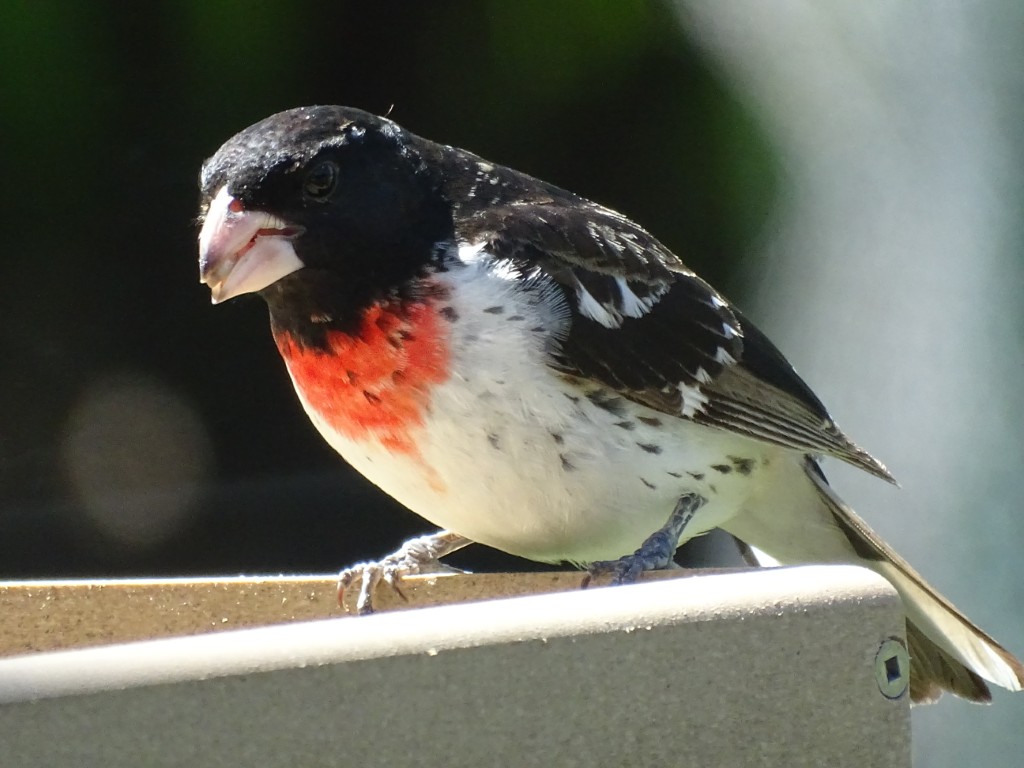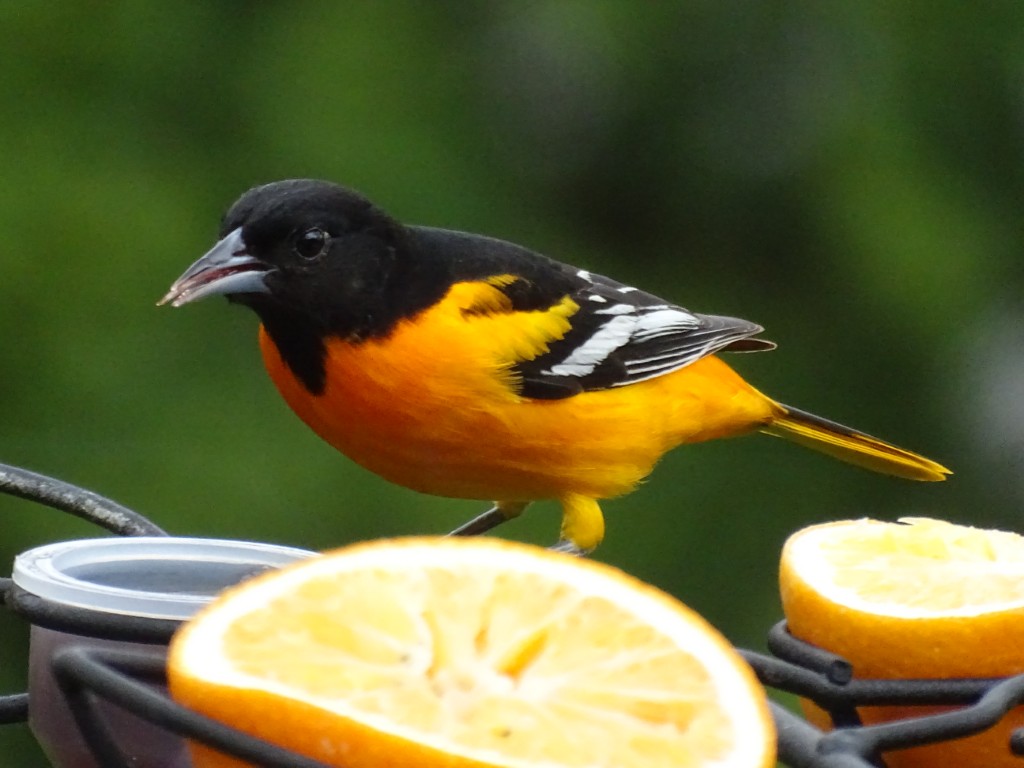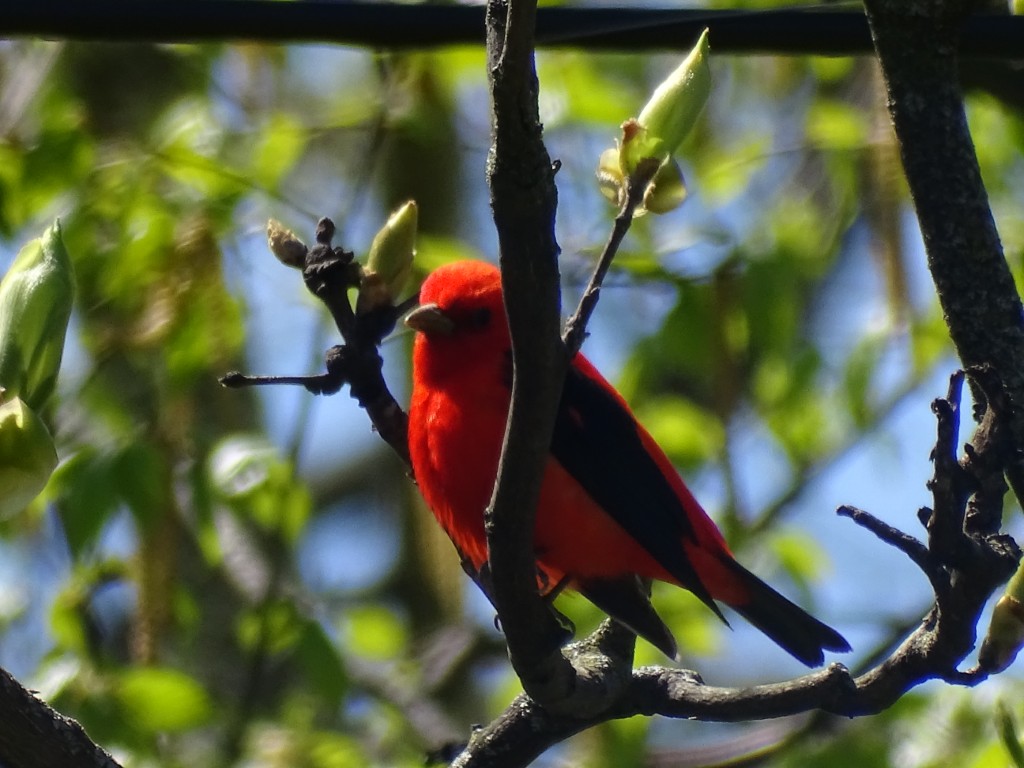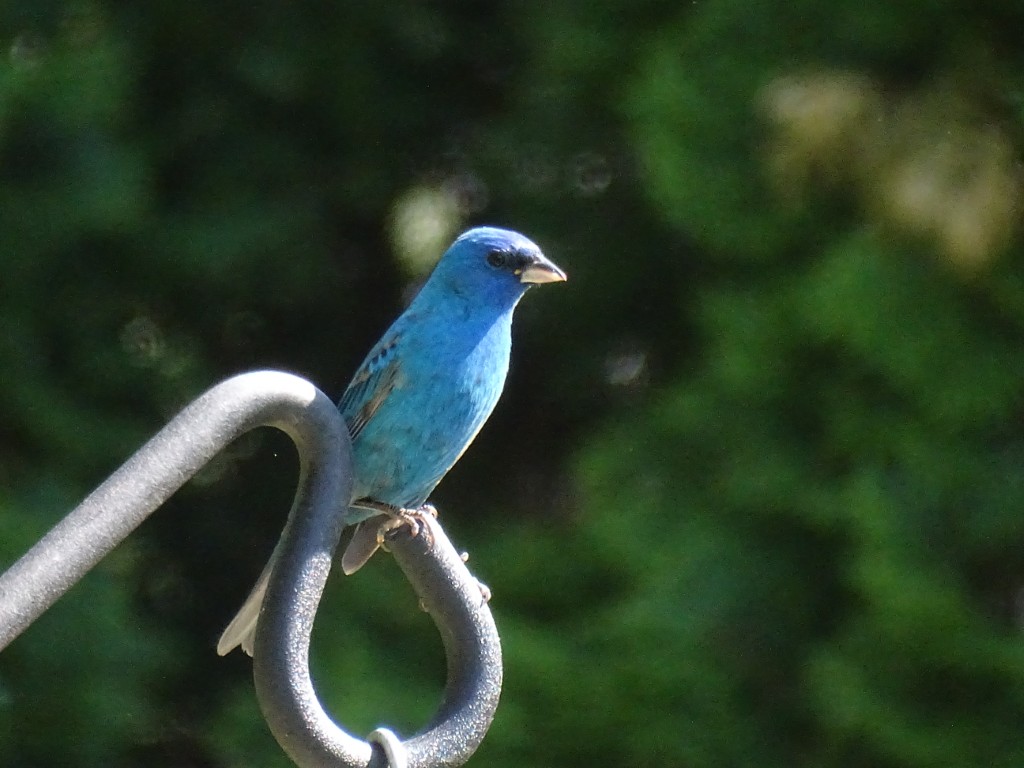It was a weird spring bird migration. During the last week of April and the first two weeks of May, the winds were never from the south at night which is most favorable for the songbirds returning from Central and South America and Mexico. If they wanted to move north, they had to fight headwinds or crosswinds.
Many chose to wait it out further south and then pushed past our area in mid-May. Migrating birds get energy from eating the caterpillars that are attracted to oak tree blossoms. But those blossoms were already way past prime by mid-May.
Jill and I still found a record number of bird species for us (almost 150!) out in the field. But it was a challenge to find them, and the window was small because the trees and shrubs leafed out so fast.
We visited many nature preserves, state parks and marshes. At those places we ran into many frustrated birdwatchers who also wondered where all the birds were.
Thankfully my favorites still dropped into our backyard—just in smaller numbers.
My husband and I got to enjoy watching Rose-breasted Grosbeaks:

Many Baltimore Orioles:

A shy Scarlet Tanager that stayed at the tops of the trees and wouldn’t cooperate for any photos. Boy they take my breath away every time!

And one lone little Indigo Bunting that spent several days in our yard serenading us with his sweet song. He came to the feeders in the evening. They are very shy and will fly away at any sudden movements, so I prefer to watch them through binoculars rather than try to photograph them:

Every spring migration is different. Maybe next year the birds will come to our area in greater numbers.
